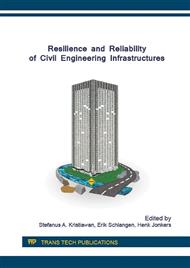p.76
p.83
p.89
p.94
p.100
p.106
p.113
p.119
p.126
Pencel Pressuremeter Efficiency for Data Compilation and Analysis
Abstract:
The model Pencel pressuremeter (PPMT), manufactured by Roctest, Inc is used to perform PPMT tests in various soils to allow engineers to more precisely carry out the consistent tests. Therefore, the control unit of the PPMT has been implemented to allow recording digital pressures and volumes. This digital information is now obtained through a standalone software package, called Automated Pressuremeter (APMT) that incorporates the required calibrations to provide engineers with instantaneous reduced data along with pertinent engineering strength and stiffness properties. The study objective is to simplify test data, reduction and analysis which lead to significant time saving. Several tests data for sands and clays were performed for accuracy and incorporated in the comparison. A linear potentiometer was connected directly to the piston to produce digital volumes, while, a digital pressure transducer was coupled into the control unit. For each injected volume increment the pressure versus time data was estimated to determine when the pressures stabilized. APMT indicated that the pressure stabilized between 10 and 80 seconds for soils evaluated. The volume increment stabilization period was defined as the time required for the pressures to stabilize. This digital equipment enhanced the precision of the pressures more than ten fold and eliminated gear backlash associated with the existing volume counter.
Info:
Periodical:
Pages:
100-105
Citation:
Online since:
July 2016
Authors:
Price:
Сopyright:
© 2016 Trans Tech Publications Ltd. All Rights Reserved
Share:
Citation:


